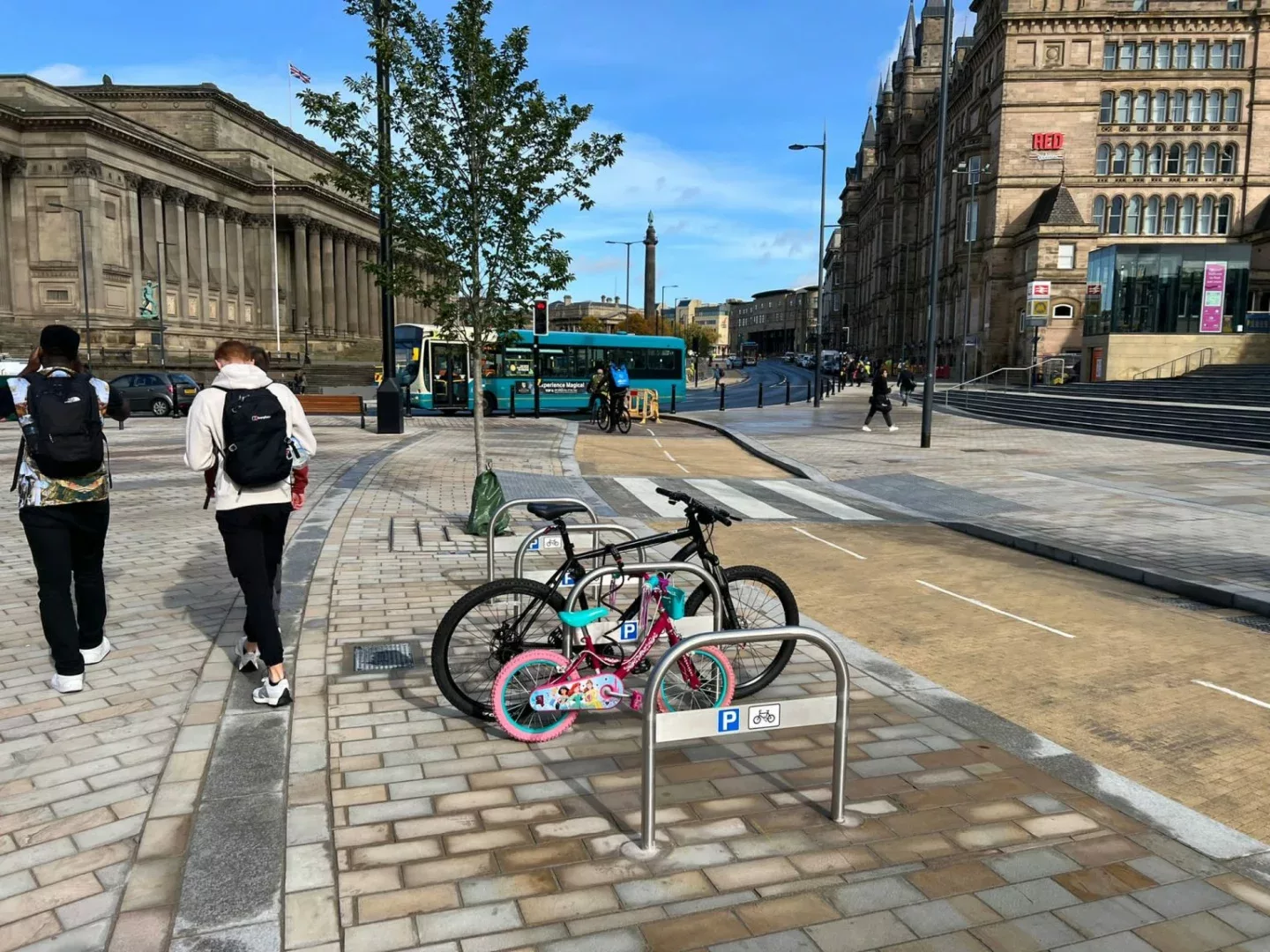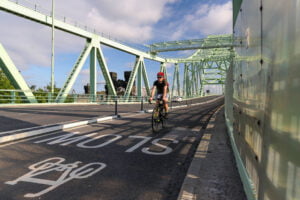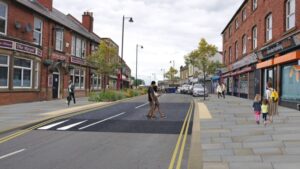Liverpool City Council is to set out its key transport priorities for the next four years as part of its ambition to achieve Carbon net-zero status and tackle climate change.
A report to the Council’s Cabinet next week (Tuesday, September 19) will seek approval for the adoption of a wide-ranging Transport Plan.
This will include number of new targets and policies, such as introducing a series of “Green bus routes” and “Green corridors”, aimed at encouraging residents to walk, cycle and use public transport more often.
The major goal underpinning the council’s new Transport Plan is to address the fact that almost two thirds of all journeys in the city are car journeys, which generates almost half a million tonnes of CO₂ emissions each year.
The Transport Plan identifies a number of interventions which could help the Council, reduce those emissions by 50%, as well increase the number of cycle journeys ten-fold by 2027.
The scale of opportunity for increasing active travel is also underlined by the fact that 66% of all trips on Merseyside are less than 5km in length, and 83% are less than 10km. Currently, of the trips that are less than 5km, 50% are undertaken by car, despite the fact that many of these trips would be considered to be within a comfortable walking, or cycling distance.
To do this, the City Council has secured funding from the Liverpool City Region Combined Authority to develop a Local Cycling and Walking Infrastructure Plan (LCWIP). This plan will be developed in 2023 in parallel with the City Centre Mobility Strategy, with an intention to roll out identified proposals from within this plan beyond 2023.
The ‘Green bus routes’ programme, developed with the Liverpool City Region Combined Authority, will look at new measures such as re-introducing priority bus lanes, as well as junction and signal upgrades to give priority to buses and active travel.
In terms of developing active travel routes, Liverpool City Council is already introducing seven new permanent cycles lanes across the city but recognises it needs to improve connections of existing links.
A major target is also to create a network of traffic-free green corridors which link parks, green spaces and recreational sites with centres of employment, homes and community activity such as local centres.
Potential ‘Green corridors’ identified include:
- Speke Coastal Reserve – Otterspool Promenade – The Strand
- Calderstones – Sefton Park – Princes Park – Knowledge Quarter
- Childwall – Wavertree Playground – Knowledge Quarter
- Croxteth County Park – Newsham Park – Knowledge Quarter
- Walton Hall Park – Stanley Park – Everton Park – Knowledge Quarter
- Leeds and Liverpool Canal – Canalside Park – Liverpool ONE
To ensure the Transport Plan is embedded across all communities, the Council also aspires for all schools to have a Travel Plan in place by 2025, as well as all workplaces or sites employing over 1,000 employees to have a workplace travel plan in place by 2025.
The Council is seeking funding to support both theses aims and if successful, the ambition would be to roll out workplace travel plans across the city to companies and businesses of all sizes.
In terms of further reducing the city’s carbon footprint, the Council has already committed to expanding the network of electric vehicle chargers in lighting columns and this year has installed over 300, in conjunction with Ubitricity. There are plans to install a further 2,000 electric vehicle chargers by May 2027.
Councillor Dan Barrington, Liverpool City Council’s Cabinet member for Transport and Connectivity, said: “The Liverpool Transport Plan connects together all of the changes we need to make to improve our health and our environment and it lays out a coherent road map to making an impact.
“The Transport Plan also lays bare the stark reality that car usage needs to be dramatically reduced. From a climate change and air quality perspective our reliance on the car is unsustainable. And in many ways its impractical with almost two thirds of all car journeys less than 5km, we need to make it much easier, safer and more convenient for people to get around by walking or cycling.
“I’m really excited by all the work that is going on behind the scenes to start making these changes and the way forward is clear. Delivering green bus routes, green active travel corridors, transport plans for schools and businesses and more on-street electric charging is all doable over the next four years.
“By working with the Liverpool City Region Combined Authority and the Department of Transport we can achieve much of this work, but individually we all have a role to play. How we travel is a choice. By taking the car we create congestion, we add to our stress levels and most will contribute to our carbon footprint.
“Our air quality needs to improve. Our road safety record needs to improve. Our obesity rates need to improve. By walking and cycling more often, we all benefit and we will make our neighbourhoods and city a more pleasant place to live in. The rewards of embracing this Transport Plan will be worth it.”
Simon O’Brien, Liverpool City Region’s Active Travel Commissioner, said: “If you will forgive the pun, Liverpool is truly at a crossroads with regard to the future of how we move around our city.
“I feel very excited about the new positive approach of the Council supported by the Combined Authority. I have seen elsewhere that if you give people proper alternatives then they will happily switch from car to bike, foot, train and bus for those shorter journeys. Let’s all get on board with vision.”





















